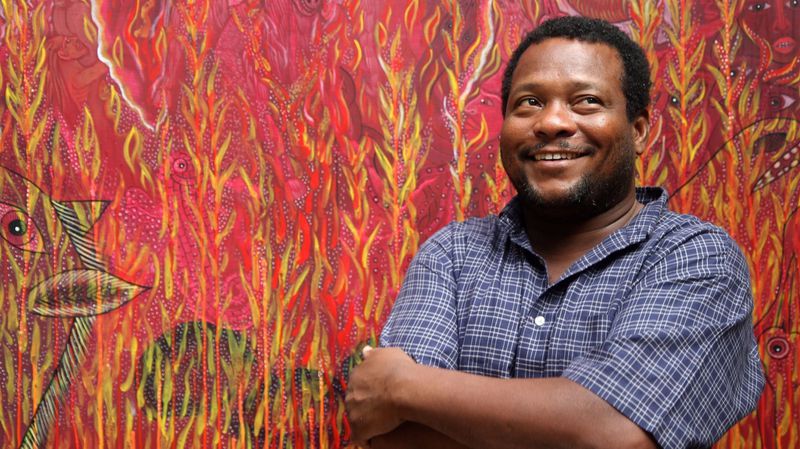
Frantz Zephirin (b. 1968)
Frantz Zephirin (b. 1968) is one of the most recognizable contemporary visionary Haitian painters working today. As a toddler he watched his uncle, the painter Antoine Obin, as he worked and by the age of 7, Frantz was making his own paintings of colonial homes that line Cap-Haitien’s coast. Swiftly diverging from the traditional Cap Haitian style, Zephirin developed a highly original approach, infusing his art with themes ranging from politics to social dynamics and Vodou spirituality. His works pulsate with vibrant compositions, brimming with anthropomorphic animal imagery, intricate patterns, and vivid colors. Drawing inspiration from Christian and modern Vodou practices, Zephirin’s art serves as a visual tapestry of Haiti’s rich spiritual heritage.
In 1996 he won a gold medal in the Third Biennial of Caribbean and Central American Painting at the Museum of Modern Art in the Dominican Republic. That same year, he was one of five Haitians selected for the 5th Cuenca Biennial in Ecuador. In 1997 and 1998, two of Zephirin’s paintings toured the United States in the landmark exhibition Sacred Arts of Haitian Vodou, organized by UCLA’s Fowler Museum of Cultural History, with subsequent presentations in Miami, Chicago, Detroit, Washington, D.C., New Orleans, and Baltimore. His work was shown by the American Visionary Art Museum in the exhibits, “Holy H20” in 2004-5 and “Home & Beast” in 2006-7.
After the devastating earthquake in Haiti in January 2010, Zephirin’s painting “The Resurrection of the Dead” (2007) appeared on the cover of The New Yorker. Later that year, Smithsonian Magazine commissioned the artist to create a painting for their September issue, which was auctioned to benefit the Smithsonian’s art conservation and cultural recovery project in Haiti. Zephirin continues to exhibit his work internationally, and was included in the 2020–2021 exhibition Haitian Masterworks at the Figge Art Museum in Davenport, Iowa, where his work is part of the museum collection. In 2022, his work with was featured at La Biennale di Venezia, further cementing his status as a trailblazer in contemporary Haitian art.
